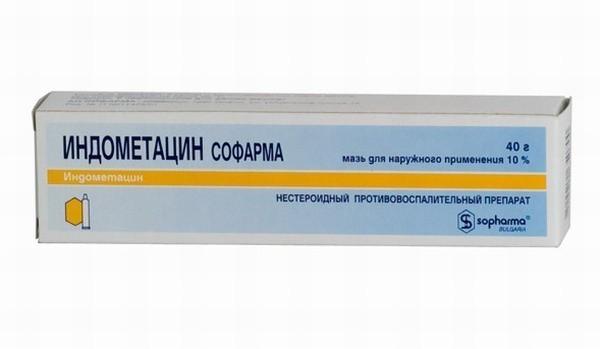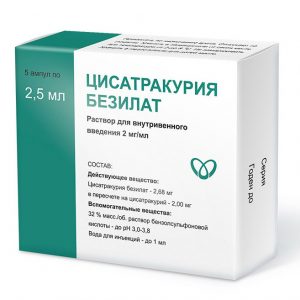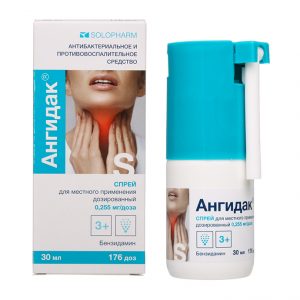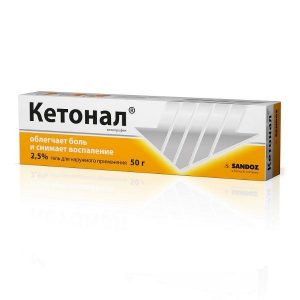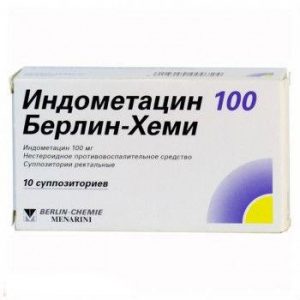Description
Release form
Ointment.
Packaging
one tube containing 40 g of ointment.
Indications
inflammatory diseases of the musculoskeletal system (including bursitis, tendovaginitis, synovitis)
chronic venous insufficiency
varicose veins, accompanied by pain and edema
trophic disorders with varicose veins .
Contraindications
individual hypersensitivity to indomethacin, aspirin or other NSAIDs (history of bronchospasm, urticaria or rhinitis due to acetylsalicylic acid or other NSAIDs)
gastric ulcer years).
hematopoiesis disorders
severe hepatic and / or renal impairment
severe forms of chronic heart failure, hypertension, pancreatitis.
Use during pregnancy and lactation
Contraindicated.
Composition
1 g of ointment contains:
Active ingredient: indomethacin 100 mg.
Excipients: anhydrous lanolin, white petrolatum, dimethyl sulfoxide, yellow wax, Aerosil 200, lavender oil.
Dosage and administration
Ointment is rubbed with a thin layer into the skin of painful parts of the body 2-3 times a day.
The total amount per day should not exceed 15 cm of ointment for adults and 7.5 cm for children over 14 years of age.
Side effects
Allergic reactions: rarely – rash, hyperemia, urticaria, pruritus.
Drug Interaction
Indomethacin reduces the effectiveness of uricosuric drugs, antihypertensives and diuretics (saluretics).
Increases the effect of indirect anticoagulants, antiplatelet agents, fibrinolytics, side effects of mineralocorticosteroids, estrogens, etc. NSAIDs.
Enhances the hypoglycemic effect of sulfonylureas.
Co-administration with paracetamol increases the risk of nephrotoxic effects.
Ethanol, colchicine, glucocorticosteroids – increase the risk of gastrointestinal complications accompanied by bleeding.
Increases blood concentrations of lithium, methotrexate, digoxin and penicillins (blockade of tubular secretion).
Cyclosporine, gold preparations increase the nephrotoxicity of indomethacin.
Cefamandol, cefoperazone, valproic acid – increase the risk of hypoprothrombinemia and danger
Co-administration with paracetamol increases the risk of nephrotoxic effects.
Ethanol, colchicine, glucocorticosteroids – increase the risk of gastrointestinal complications accompanied by bleeding.
Increases blood concentrations of lithium, methotrexate, digoxin and penicillins (blockade of tubular secretion).
Cyclosporine, gold preparations increase the nephrotoxicity of indomethacin.
Cefamandol, cefoperazone, valproic acid – increase the risk of hypoprothrombinemia and danger
Co-administration with paracetamol increases the risk of nephrotoxic effects.
Ethanol, colchicine, glucocorticosteroids – increase the risk of gastrointestinal complications accompanied by bleeding.
Increases blood concentrations of lithium, methotrexate, digoxin and penicillins (blockade of tubular secretion).
Cyclosporine, gold preparations increase the nephrotoxicity of indomethacin.
Cefamandol, cefoperazone, valproic acid – increase the risk of hypoprothrombinemia and danger digoxin and penicillins (blockade of tubular secretion).
Cyclosporine, gold preparations increase the nephrotoxicity of indomethacin.
Cefamandol, cefoperazone, valproic acid – increase the risk of hypoprothrombinemia and danger digoxin and penicillins (blockade of tubular secretion).
Cyclosporine, gold preparations increase the nephrotoxicity of indomethacin.
Cefamandol, cefoperazone, valproic acid – increase the risk of hypoprothrombinemia and dangerbleeding.
Increases the toxic effect of zidovudine.
Overdose
Symptoms: nausea, vomiting, severe headache, dizziness, memory impairment, disorientation. In severe cases of paresthesia, numbness of the extremities, convulsions.
Treatment: symptomatic therapy. Hemodialysis is ineffective.
Storage conditions
In a dry, dark place, at temperatures below 25 ° C.
Expiration
5 years.
Deystvuyuschee substances
indometacin
Pharmacy terms
Over the counter
Dosage form
Dosage form
ointment
Sofarma Bolgaria
